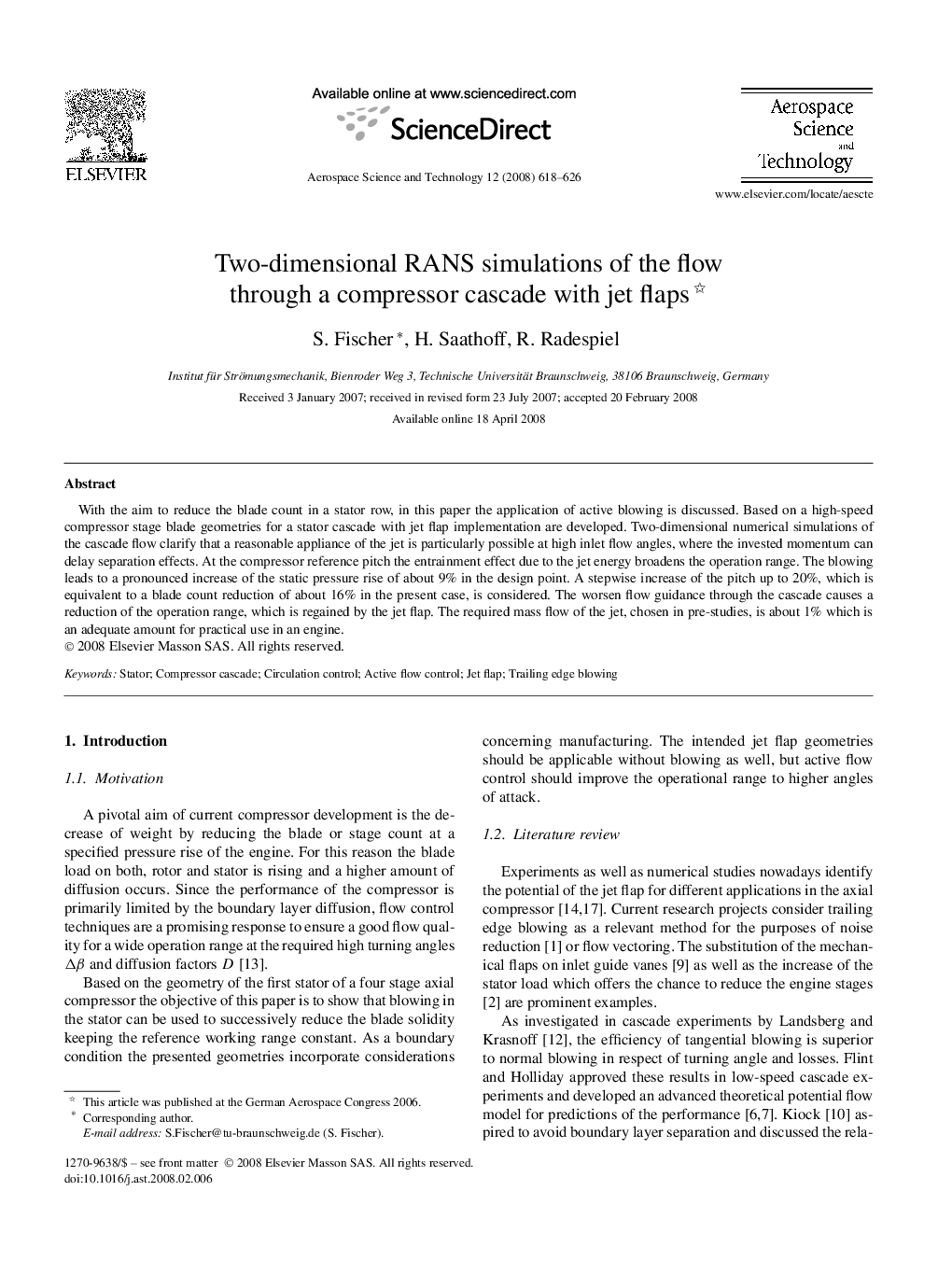| Article ID | Journal | Published Year | Pages | File Type |
|---|---|---|---|---|
| 1718663 | Aerospace Science and Technology | 2008 | 9 Pages |
Abstract
With the aim to reduce the blade count in a stator row, in this paper the application of active blowing is discussed. Based on a high-speed compressor stage blade geometries for a stator cascade with jet flap implementation are developed. Two-dimensional numerical simulations of the cascade flow clarify that a reasonable appliance of the jet is particularly possible at high inlet flow angles, where the invested momentum can delay separation effects. At the compressor reference pitch the entrainment effect due to the jet energy broadens the operation range. The blowing leads to a pronounced increase of the static pressure rise of about 9% in the design point. A stepwise increase of the pitch up to 20%, which is equivalent to a blade count reduction of about 16% in the present case, is considered. The worsen flow guidance through the cascade causes a reduction of the operation range, which is regained by the jet flap. The required mass flow of the jet, chosen in pre-studies, is about 1% which is an adequate amount for practical use in an engine.
Related Topics
Physical Sciences and Engineering
Engineering
Aerospace Engineering
Authors
S. Fischer, H. Saathoff, R. Radespiel,
